Introduction:
Are you dreaming of a trip to Montevideo, but feeling overwhelmed by endless generic lists, worried about missing out on the real local gems, or unsure how to navigate an unfamiliar city safely and efficiently?
Many travelers stick to the well-trodden path, missing the vibrant cultural heartbeat, hidden culinary delights, and genuine local interactions that make Montevideo truly special. This isn’t just another tourist guide; it’s your insider pass to discovering the authentic soul of Uruguay’s charming capital, or even a travel guide to ancient wonders or New Mexico’s heart in Albuquerque. We’ll cut through the noise, providing carefully curated recommendations and practical advice so that you can transform your trip from ordinary to unforgettable, even mastering long-haul flights & like experiencing the Chernobyl Exclusion Zone safely.
By the end of this guide, you’ll have a clear roadmap to explore Montevideo with confidence, discover its unique character, savor its incredible flavors, and connect with its warm, welcoming culture. Get ready to experience Montevideo like a true Montevidean, from must-see landmarks to secret local hangouts, ensuring every moment of your visit is maximized and memorable, just like exploring Albania’s vibrant capital.
Overview of Montevideo: The Capital’s Heartbeat
A Brief History and Evolution:
Montevideo began as a modest colonial outpost in the early 18th century and gradually blossomed into the dynamic capital it is today, much like Ukraine’s resilient capital. Key historical milestones include the city’s founding in 1724, its role in Uruguay’s independence struggles, and its evolution into a thriving port city. The influence of European immigrants, primarily from Italy, Spain, Germany, and France, has left a lasting mark on the city’s culture and architecture, including things to do in Naples, Italy. As you walk through Montevideo, you’ll notice the blend of colonial buildings, neoclassical facades, and the unmistakable influence of European design, all adding layers to the city’s vibrant history.
The Vibe and Atmosphere:
Montevideo stands out for its laid-back atmosphere, which contrasts with the hustle and bustle typical of most capitals. The pace of life here is slower, giving you the space to relax and enjoy every moment. As you stroll along the tree-lined streets or sit in a cafe, you’ll sense a perfect mix of nostalgia and modernity the old town exuding charm while the newer areas pulse with energy and creative expression.
Embrace the relaxed, slow-paced rhythm of Montevideo; it’s part of its charm and encourages a more immersive experience. Take the time to wander the streets, stop by local markets, or simply sit at the shore these moments will offer you the true essence of the city.
Why Montevideo Stands Out:
Montevideo’s unique charm lies in its lush green spaces, particularly the Rambla, a vast coastal promenade that stretches for miles, perfect for long walks or bike rides. Its extensive coastline invites visitors to enjoy the sea without the typical tourist crowds. Add to this the city’s rich, yet often overlooked, cultural scene galleries, theaters, and live music venues and you begin to understand what makes Montevideo stand apart.
The people of Montevideo are warm and welcoming, with a strong sense of community that’s felt at every corner. Whether you’re interacting with a local vendor or striking up a conversation at a cafe, you’ll be treated like family, making your time in the city all the more memorable.
This content is crafted with input from residents and travel experts with firsthand experience of Montevideo, ensuring that the insights and recommendations you receive are authentic and reliable.
Montevideo’s Must-See Attractions & Landmarks
Ciudad Vieja (Old City):
Step back in time as you explore Ciudad Vieja, Montevideo’s historic heart. This area is brimming with charming plazas, colonial-era architecture, and vibrant street art. Wander through narrow cobblestone streets and admire the colorful murals that give this neighborhood a unique, artistic flair.
| Spot | What It Is | Why Visit |
|---|---|---|
| Puerta de la Ciudadela | The old city gate from Montevideo’s colonial era | A historic landmark that marks the entrance to the Old City |
| Matriz Cathedral | One of the city’s oldest and most beautiful churches | A blend of history, architecture, and quiet reflection |
| Sarandí Pedestrian Street | A bustling street lined with shops, cafés, and performers | Perfect for strolling, people-watching, and soaking up local culture |
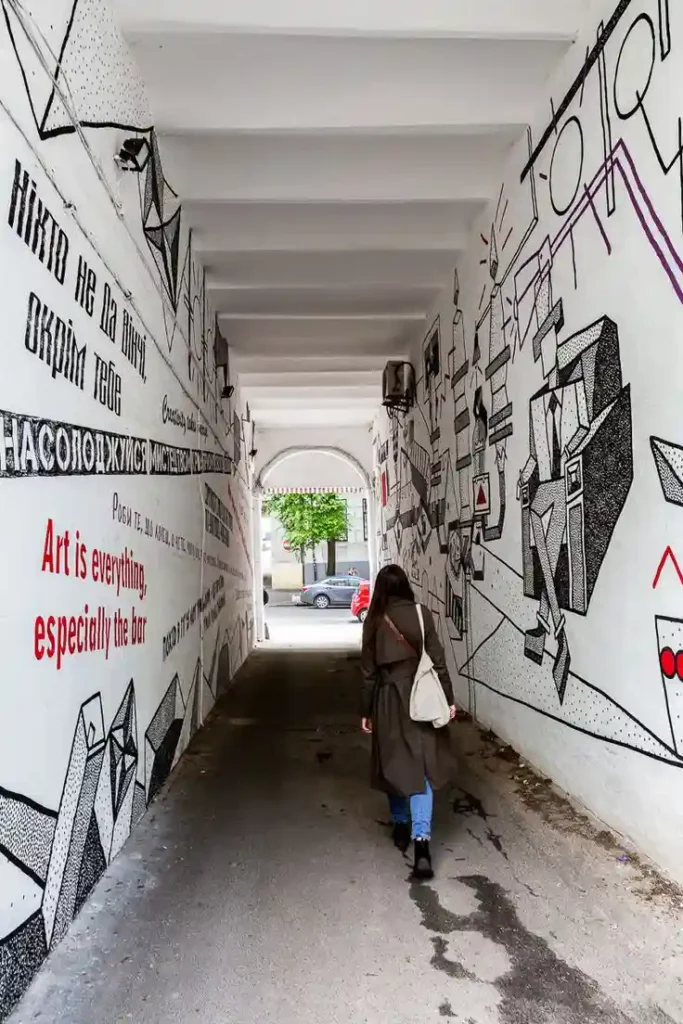
Mercado del Puerto (Port Market):
For food lovers, Mercado del Puerto is an absolute must. This iconic culinary hub is the heart of Montevideo’s parrilla (barbecue) culture. The market is packed with parrilla joints offering juicy steaks, sausages, and other grilled meats, making it a top destination for anyone seeking authentic Uruguayan flavors. Don’t just pass by experience the sizzle and aroma of an authentic Uruguayan barbecue. The market is also home to local artisans, making it an excellent place to shop for unique souvenirs.
Arrive early to secure a good spot and avoid the midday crowds that flood the area. A leisurely lunch here is an experience you won’t want to miss. Explore Mercado del Puerto for an authentic parrilla experience, but make sure to go early for lunch to enjoy it without the crowds.
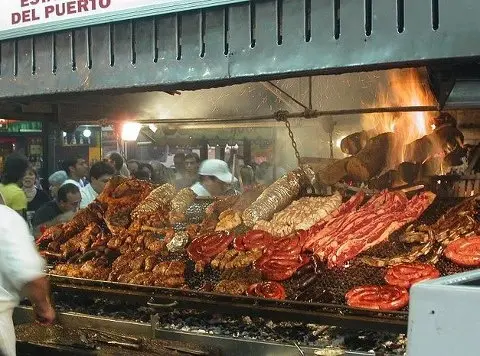
La Rambla:
La Rambla is Montevideo’s iconic coastal promenade, offering stunning views of the coastline and local life. It’s not just a place to walk, it’s where locals go to unwind, exercise, and enjoy the sea breeze. From hiking to cycling or just people-watching, it’s an essential part of the Montevideo experience. La Rambla is central to the local culture, and its stretches of coastline are perfect for a quiet retreat in the middle of the city.
| Location | Activities | Why Do It? |
|---|---|---|
| Middle of the City (Rambla Promenade) | Walking, cycling, jogging | Scenic route that stretches along the waterfront |
| Sunset Spot | Watching the sunset | Offers some of the most beautiful views in Montevideo |
| Leisurely Experience | Strolling or biking at sunset | A cherished local tradition and the best way to feel like part of the city |
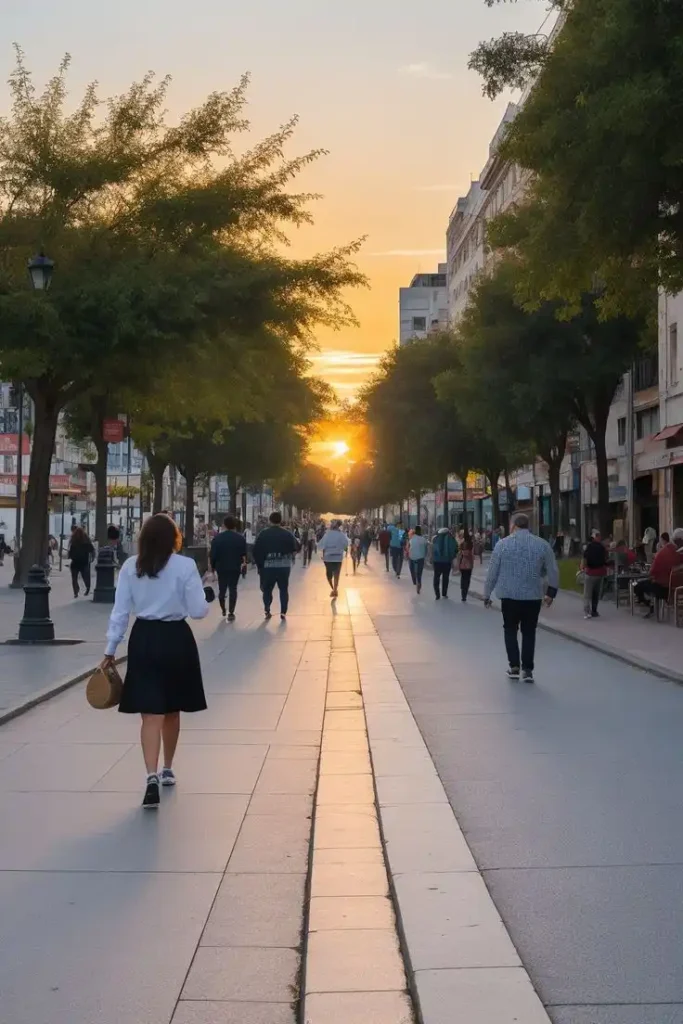
Palacio Salvo:
The Palacio Salvo is an architectural icon and one of Montevideo’s most recognizable landmarks. This art deco masterpiece towers above the city, offering a glimpse into Montevideo’s early 20th-century grandeur. Known for its striking design, the building’s unique features make it an unforgettable part of the skyline. The Palacio Salvo is often associated with the nearby Lighthouse of Montevideo, with some suggesting its design was inspired by the beacon. Take time to learn about its fascinating history when you visit.
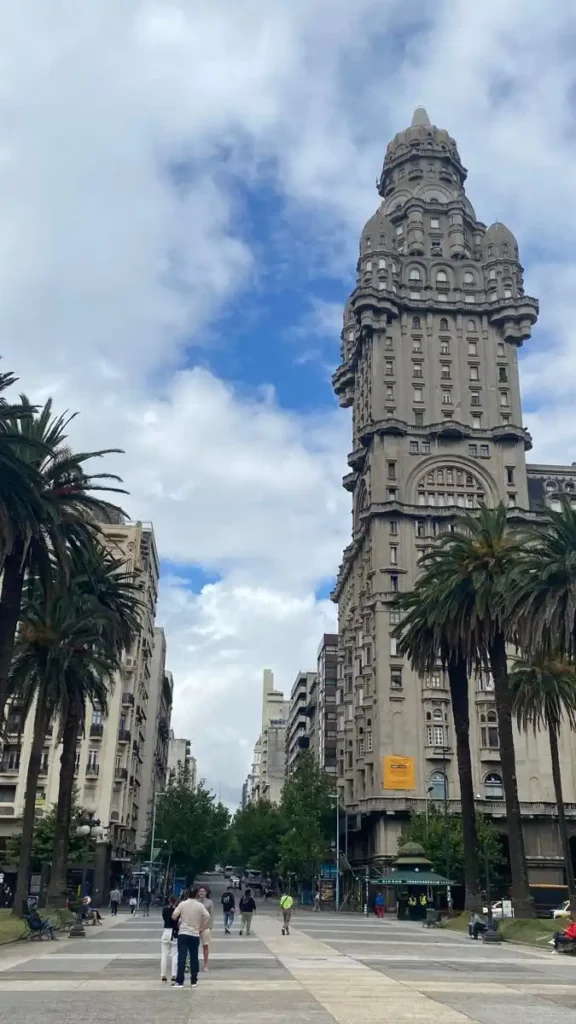
Plaza Independencia:
This central hub connects Ciudad Vieja with the modern parts of Montevideo, making it a key landmark for understanding the city’s past and present, or Santo Domingo’s rich history.
| Feature / Attraction | What It Is | Why Visit |
|---|---|---|
| Artigas Mausoleum | Resting place of Uruguay’s national hero, José Gervasio Artigas | A site of deep historical and cultural significance |
| Gateway to the Citadel | One of the main entrances to Montevideo’s Old City | Symbolic link between the colonial past and modern city |
| Palacio Salvo & Executive Tower | Two striking architectural landmarks framing the plaza | Perfect for photography and appreciating Montevideo’s skyline |
| Solís Theatre (Nearby) | One of South America’s oldest and most prestigious theaters | Ideal for catching a performance or exploring its history on a guided tour |
We ensure that all details—such as opening hours, ticket prices, and accessibility are regularly verified, so you have the most accurate, up-to-date information for your visit.
Immersive Cultural Experiences: Beyond the Tourist Trail
Tango in Montevideo:
While tango is often associated with Argentina, Montevideo has its unique take on this passionate dance. The city’s tango scene is more intimate and melancholic, offering a quieter, deeper experience of this iconic art form.
| Aspect | What It Is | Why It Matters |
|---|---|---|
| Local Scene | Tango is about rhythm, emotion, and human connection rather than flashy performance | Creates a relaxed but deeply moving atmosphere, whether you dance or simply watch |
| Milongas (Dance Halls) | Traditional local venues where tango is danced late into the night | Best way to experience tango authentically with locals |
| Public Squares & Cultural Centers | Open-air performances and cultural events | Lets you enjoy tango up close, often free and part of community life |
Candombe (The Soul of Uruguay):
Candombe is the heartbeat of Uruguay’s Afro-Uruguayan culture. This rhythmic dance and music form has deep roots in the country’s history and plays a significant role in national celebrations.
| Aspect | What It Is | Why It Matters |
|---|---|---|
| Origins & Significance | Rooted in African slave traditions, expressed through drums and dance | Tells stories of struggle, resilience, and joy; a living cultural heritage |
| Barrio Sur & Palermo | Historic neighborhoods in Montevideo | The heart of Candombe traditions, where the rhythm still thrives |
| Sundays & Carnaval | Weekly gatherings and annual Carnaval (late Jan–early Mar) | Best times to witness vibrant parades filled with drums, dance, and color |
If visiting during Carnaval, be sure to book accommodation well in advance. It’s a time of grand celebration, and hotels fill up fast with people coming to experience the Candombe parades.
Mate Culture:
In Montevideo, mate is much more than a drink it’s a cherished social ritual. Sharing mate (pronounced ‘mah-teh’) is a symbol of connection and community.
| Aspect | What It Is | Why It Matters |
|---|---|---|
| More Than a Drink | A social ritual centered around sharing yerba mate | Symbol of connection, friendship, and community in Uruguay |
| The Ritual | One gourd, one straw (bombilla), passed around in turns | About sharing a moment, not just sipping tea |
| Etiquette | Don’t rush your turn; only say “thank you” when you’re done | Shows respect for the tradition and signals you’re finished |
| How to Blend In | Carry a mate while exploring Montevideo | Instantly makes you feel part of the local rhythm and sparks conversations |
Key Museums & Art Galleries:
Montevideo’s cultural scene offers much more than just the local tango and Candombe traditions. There are several museums and galleries where you can dive deeper into the country’s art and history.
- MAPI (Museo de Arte Precolombino e Indígena): A must-see for anyone interested in indigenous art and archaeology.
- National Museum of Visual Arts (MNVA): A great place to explore both Uruguayan and international art.
- Museo del Carnaval: Immerse yourself in the colorful history of Montevideo’s Carnaval, one of the most vibrant festivals in South America.
For the most accurate and up-to-date cultural insights, events, and schedules, we rely on official Montevideo tourism boards, cultural institutions, and well-regarded historical societies. This ensures that the information you receive is both reliable and enriching.
A Taste of Montevideo: Culinary Adventures & Local Delights
Must-Try Local Dishes:
Montevideo’s food scene is a reflection of its rich culture and history. The city’s local dishes are not just meals—they are experiences that connect you with the essence of Uruguay.
1) Chivito:
Uruguay’s iconic steak sandwich, the chivito, is a must-try. With its tender beef, fresh veggies, and often topped with bacon and a fried egg, it’s the perfect comfort food after a day of exploring the city. Try a ‘chivito’ from a local eatery, it’s Uruguay’s iconic steak sandwich and a culinary must-try.
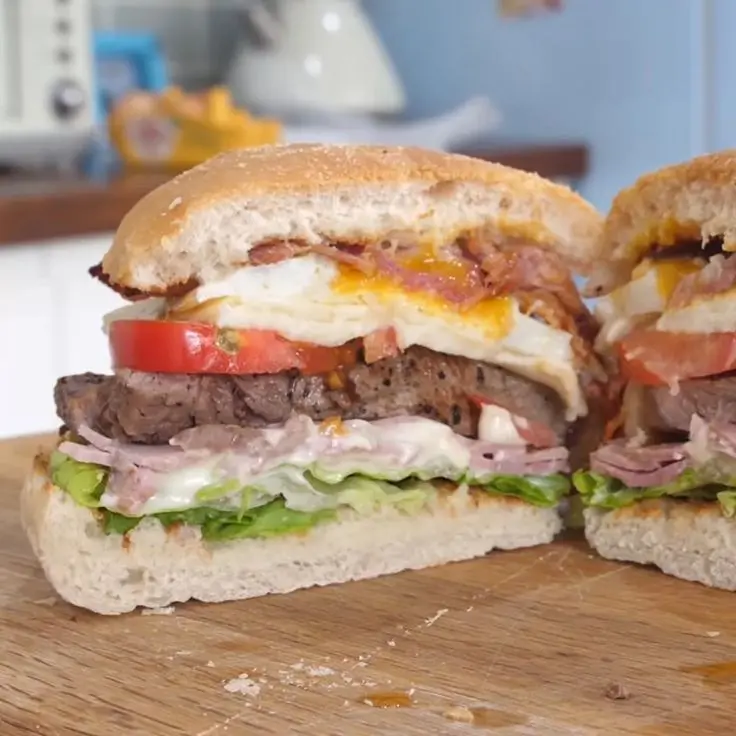
2) Parrilla (Uruguayan Barbecue):
Parrilla isn’t just about grilling meat, it’s a cultural event. The slow-roasted cuts of beef, sausages, and even offal served at these gatherings are more than food; they’re a communal experience. Visit any parrilla and you’ll see why Uruguayan barbecue is a cornerstone of social life here.
3) Empanadas:
These savory pastries come with a range of fillings, beef, cheese, or chicken and are an excellent snack for any time of day.
4) Pastel de Carne:
A traditional meat pie, pastel de carne, is another Uruguayan classic. Its flaky crust and seasoned ground meat filling make it a comforting meal that’s perfect for lunch or dinner.
Traditional Drinks:
Uruguay’s drinks are as varied and exciting as its cuisine. From sparkling wines to refreshing fruit punches, you’ll find plenty to sample.
1) Medio y Medio:
This classic drink from Mercado del Puerto is a mix of sparkling white wine and dry white wine, offering a crisp, refreshing taste that pairs perfectly with the country’s hearty foods.
2) Grappamiel:
Grappamiel is a honey-flavored grappa, typically enjoyed as a shot. It’s an intense and warming drink that you’ll often find in local bars or as part of a traditional gathering.
3) Clericó:
Clericó is a fruity, refreshing punch made with white wine and fresh fruits. It’s a perfect drink for warm afternoons by the coast or at one of Montevideo’s many open-air cafes.
Authentic Eateries & Culinary Hotspots:
Montevideo’s food scene extends beyond the famous Mercado del Puerto. For an authentic taste of local life, venture into residential neighborhoods where hidden gems await, including Palermo’s hidden gems.
1) Beyond Mercado del Puerto:
While the Port Market is a must-visit, there are plenty of other local “parrillas” tucked away in quieter neighborhoods where you can enjoy a more intimate and authentic meal.
2) Cafes for “Merienda” (Afternoon Snack):
Montevideo’s cafe culture is rich and relaxing. During merienda (afternoon snack time), locals gather for coffee and pastries. Try some of the best artisanal treats at cafes around the city to get an authentic feel of local life.
3) Ice Cream Parlors (Heladerías):
Uruguayans take their ice cream seriously. Montevideo’s heladerías serve up an array of rich, creamy, and unique flavors. Don’t miss out on this sweet part of the city’s food culture.
Montevideo’s food and drink scene isn’t just about satisfying hunger, it’s an opportunity to immerse yourself in the culture truly. From a casual chivito sandwich at a local spot to a complete parrilla feast in a neighborhood eatery, the city’s culinary delights provide insight into its history, traditions, and way of life. This guide goes beyond just listing dishes, it offers practical recommendations on where to find the best flavors, making your food exploration an essential part of your Montevideo adventure, or exploring Chile from Atacama or or authentic experiences in Battambang, Cambodia.
Outdoor Escapes & Green Spaces
1) Parque Rodó:
Parque Rodó is one of Montevideo’s most beloved green spaces, offering a blend of leisure, nature, and fun activities.
| Feature / Activity | What It Is | Why Visit |
|---|---|---|
| Amusement Park | A small park with nostalgic rides | Adds a playful, family-friendly vibe |
| Lake | Scenic lake with paddle boats for rent | Peaceful way to enjoy the outdoors |
| Charming Castle | A picturesque castle within the park | Great photo spot and local landmark |
| Walking Paths | Tree-lined trails for strolling or jogging | Perfect for escaping city bustle |
| Paddle Boating | Rent a boat and explore the lake | Relaxing activity for couples or families |
| Roller Skating / Cycling | Smooth paths for skating or biking | Fun way to stay active in a lively setting |
| Relaxing Outdoors | Open green spaces to sit, rest, and enjoy | Ideal for unwinding in fresh air |
2) Parque Batlle:
Parque Batlle is more than just a part, it’s a historic and cultural hub for both locals and visitors.
| Highlight / Feature | What It Is | Why Visit |
|---|---|---|
| Estadio Centenario | Historic football stadium, host of the first FIFA World Cup in 1930 | A must-see for football fans and a UNESCO World Heritage Site candidate |
| La Carreta Monument | Large bronze sculpture symbolizing Uruguay’s rural past | Represents national history, resilience, and identity |
| Park Grounds | Expansive green space for walks, runs, or picnics | Peaceful retreat while exploring Montevideo |
Montevideo’s Beaches (Along the Rambla):
Montevideo offers several beaches that are perfect for relaxing or enjoying the local beach culture. The Rambla, a long promenade along the coast, connects them all, providing easy access to the best beach experiences.
Montevideo’s coastline offers two very different beach experiences, each with its own charm. Pocitos Beach is the city’s most popular urban stretch of sand, buzzing with life and lined with cafés, shops, and people soaking up the vibrant atmosphere. It is the perfect place for people-watching, joining a game of beach volleyball with locals, or strolling the Rambla before cooling off with a swim in summer. For a quieter escape, head to Carrasco Beach, where elegant waterfront architecture and a more refined setting create a peaceful retreat away from the city crowds. Here, you can relax by the water, enjoy gentle walks, and take in some of Montevideo’s most beautiful seaside views. Whether you prefer the lively rhythm of Pocitos or the calm sophistication of Carrasco, both beaches capture the spirit of the city in their own way.
Activities:
- Sunbathing and swimming (seasonal)
- Beach volleyball with locals
- Relaxing by the water or strolling the Rambla
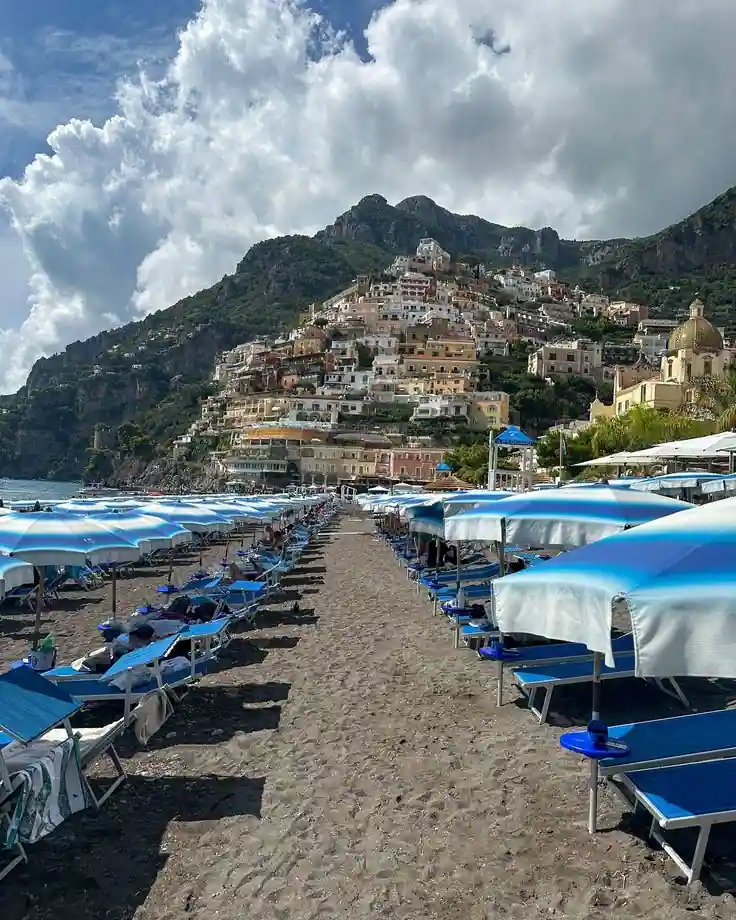
Walking & Cycling Tours:
Montevideo’s green spaces are best explored on foot or by bike.
Exploring Specific Neighborhoods on Foot:
Take a walking tour through Montevideo’s charming neighborhoods. Wander through the tree-lined streets of Punta Carretas, explore the artistic vibe of Ciudad Vieja, or discover hidden gems in Parque Batlle.
Renting Bikes for a Rambla Ride:
Rent a bike and cruise along the Rambla for beautiful coastal views and a refreshing breeze. It’s a great way to cover more ground while enjoying the sea and the city’s laid-back atmosphere.
Shopping for Souvenirs & Local Treasures
Tristán Narvaja Flea Market:
For an authentic shopping experience, head to the Tristán Narvaja Flea Market. It’s an unmissable spot for anyone looking to dive into the local scene.
The market is open on Sundays, making it the perfect place to spend your morning hunting for antiques, second-hand books, local crafts, and unique finds that you won’t see anywhere else in the city.
The market is lively and full of character, offering a mix of old and new items. You’ll find everything from vintage furniture to hand-carved trinkets, and the atmosphere is always buzzing with energy. It’s a great place to experience Montevideo’s more authentic, local side.
Craft Fairs & Artisan Shops:
Montevideo is home to a wide array of artisan shops and craft fairs where you can pick up one-of-a-kind treasures that showcase the best of Uruguayan craftsmanship.
Uruguay is known for its beautiful leather goods, intricate wool products, and colorful crafts. These handmade items make perfect souvenirs and gifts, each reflecting the country’s rich cultural heritage.
- Ciudad Vieja: This historic neighborhood is packed with artisan shops where you can find everything from woven blankets to hand-carved leather items.
- Artisan Fairs: Keep an eye out for local craft fairs, particularly those held on weekends, where you’ll find even more beautiful handmade goods.
Yerba Mate Paraphernalia:
If you’re looking to bring a piece of Uruguayan culture back with you, there’s no better souvenir than yerba mate accessories. Yerba mate is a key part of life in Uruguay, and there’s an abundance of items to bring home.
Gourds, Bombillas (Straws), Thermoses:
These traditional mate-drinking accessories make excellent souvenirs. Whether you’re buying a gourd (the cup used to drink mate), a bombilla (the straw used for sipping), or a thermos to keep your drink hot, these items are not only practical but also a meaningful way to remember your time in Uruguay.
Local Delicacies to Take Home:
Montevideo is known for its delicious food, and it’s easy to bring a taste of the city home with you. A creamy caramel spread that’s a staple in Uruguayan kitchens. It’s perfect for spreading on toast or enjoying with desserts. Uruguay is known for its wine production, particularly Tannat, the country’s signature red wine. Grab a bottle (or two) to bring home. Uruguayan olive oil is top-quality and often produced in small, family-run farms. It’s a great gift for food lovers or a treat for yourself.
Navigating Montevideo Like a Local
Getting Around:
Public Bus System (STM Card):
Montevideo’s public transportation system is affordable and extensive, making it an easy way to get around the city. You can use the STM card to pay for bus fares, which is both convenient and cost-effective. The system covers most areas of the town, so you’ll have no trouble reaching your destination.
Make sure to get your STM card when you arrive. It’s a practical way to move around Montevideo. For late-night travel or when you’re in a rush, taxis or ride-sharing apps like Uber and Cabify are readily available and convenient.
For local public transport information, the STM Montevideo app is an excellent resource for bus routes and card information.
Taxis & Ride-Sharing:
Taxis are easy to find, and both Uber and Cabify operate in Montevideo. They are convenient late at night or when you’re in a hurry.
Walking & Cycling:
Montevideo is a great city to explore on foot or by bike. The neighborhoods are pedestrian-friendly, and renting a bike to cycle along the Rambla or through local parks is a fun and relaxing way to see the city.
Safety & Security:
General Advice:
As with any city, always be aware of your surroundings, especially in crowded areas like Ciudad Vieja or during significant public events. While Montevideo is generally safe, it’s best to stay cautious.
Keep an eye on your belongings, particularly in busy spots like markets or plazas. It’s also wise to avoid walking alone at night in less crowded areas.
Emergency Contacts:
- Police: Dial 911 for emergency services.
- Medical Services: The local emergency medical number is 105.
Best Time to Visit:
When planning a visit to Montevideo, it helps to keep the seasons in mind. Summer (December to February) is the prime time for beach lovers, when the coastline is at its most inviting, though popular spots like Pocitos and Carrasco can get quite crowded. Autumn and spring bring milder weather and fewer tourists, making them perfect for relaxed exploration without the hustle. If your trip coincides with Carnaval season, from late January to early March, you will experience the city at its most vibrant—streets filled with parades, music, and dancing that showcase Uruguay’s cultural heartbeat.
Currency & Money:
The local currency is the Uruguayan Peso (UYU), but US dollars are accepted in some places. Be sure to check exchange rates before you go. Credit cards are widely accepted in most places, and ATMs are easy to find for withdrawing cash when needed. Tourists can claim a VAT refund on certain purchases when leaving the country. Be sure to ask for the necessary paperwork when making eligible purchases.
For currency conversions, the XE Currency Converter app is a reliable tool to stay updated on the latest exchange rates.
Language Tips:
Basic Spanish Phrases:
Montevideo’s primary language is Spanish, but locals are friendly and appreciate any effort to speak the language. A few key phrases will go a long way. Learn a few basic Spanish phrases like “Hola” (Hello), “Gracias” (Thank you), “Por favor” (Please), and “¿Cuánto cuesta?” (How much does it cost?). Locals will appreciate it! If you need extra help, apps like Google Translate or DeepL are great for quick translations.
Local Etiquette & Customs:
When greeting locals, a handshake is standard, and cheek kisses are typical among friends. In formal settings, addressing people with titles like “Señor” or “Señora” is polite. Uruguayans take their meals seriously. It’s common to enjoy long, leisurely meals, especially during lunchtime. Also, don’t forget to try mate (the traditional tea) with a local, as it’s an essential social custom. Tipping is customary in restaurants, usually around 10%. For taxis and small services, rounding up the fare is appreciated.
Connectivity:
Free Wi-Fi is available in many cafes, restaurants, and public spaces. If you need mobile data, consider buying a local SIM card upon arrival. This will give you easy access to maps, communication, and transport apps. For offline navigation, apps like Maps.me or the offline feature in Google Maps are beneficial, especially if you don’t want to rely on data while exploring.
This guide is built on verified and accurate information from local sources, ensuring you have up-to-date advice on transportation, safety, money, and cultural insights to help you navigate Montevideo with confidence.
Montevideo Must-See Attractions Quick Guide
| Attraction | What to See/Do | Estimated Time | Cost (Free/Low/Moderate/High) | Best For |
| Ciudad Vieja | Historic architecture, plazas, street art, and museums | 3-5 hours | Low (museum entries vary) | History lovers, photographers |
| Mercado del Puerto | Authentic parrilla, lively atmosphere, local food | 1.5-2.5 hours | Moderate (for food) | Foodies, cultural immersion |
| La Rambla | Walking, cycling, sunset views, people-watching | 1-3 hours (flexible) | Free | Relaxation, exercise, scenic views |
| Palacio Salvo | Iconic Art Deco architecture, city views | 0.5-1 hour | Free (outside), Low (tours) | Architecture enthusiasts |
| Plaza Independencia | Artigas Mausoleum, a historic landmark | 1-1.5 hours | Free | History, central hub exploration |
| MAPI Museum | Pre-Columbian and indigenous art and artifacts | 1.5-2 hours | Low | Art & history buffs |
| National Museum of Visual Arts | Uruguayan and international art collections | 2-3 hours | Low/Free (check schedule) | Art lovers |
| Parque Rodó | Amusement park, lake, green space, relaxation | 2-4 hours | Low (amusements vary) | Families, leisure |
| Tristán Narvaja Market | Flea market, antiques, books, and local crafts | 2-4 hours (Sunday only) | Low (for browsing) | Shoppers, unique finds |
This guide should give travelers a clear and concise overview of the must-see spots in Montevideo, including the estimated time for each attraction, its cost, and who it’s best suited for.
Montevideo on a Rainy Day: Engaging Indoor Activities
Montevideo is known for its sunny days, but even on a rainy day, there’s no shortage of engaging indoor activities to keep you entertained and immersed in the local culture. Whether you’re a history lover, a foodie, or a digital nomad, there’s something for everyone. Here are some great ways to enjoy the city when the weather isn’t ideal:
1) Museum Hopping
On a rainy day in Montevideo, the city’s museums offer the perfect way to explore its rich history and culture indoors. At the Museo de Arte Precolombino e Indígena (MAPI), you can immerse yourself in fascinating collections of pre-Columbian and indigenous art, while the National Museum of Visual Arts (MNVA) showcases an impressive range of Uruguayan and international works in a beautiful setting. For a burst of color and rhythm, the Museo del Carnaval brings Uruguay’s most famous festival to life with dazzling costumes and lively music. And for football fans, the Museo del Fútbol at Estadio Centenario dives deep into the country’s legendary sporting past, including its historic role in hosting the very first World Cup.
2) Cafe Culture & Co-working
Montevideo’s thriving café culture makes it easy to find a cozy corner to escape the rain or simply enjoy a slow afternoon. Classic spots like Café Brasilero and La Cigale offer an authentic local experience, where you can sip mate or coffee alongside a fresh pastry while soaking in the relaxed city vibe. For digital nomads or anyone needing to stay connected, many cafés in Punta Carretas and Ciudad Vieja provide free Wi-Fi, making them ideal for working on the go without losing the warmth and comfort of a café setting.
3) Shopping Malls & Galleries
If the weather keeps you indoors, Montevideo still has plenty to offer for shopping and art lovers. Punta Carretas Shopping and Montevideo Shopping are the city’s main malls, combining retail stores, restaurants, and entertainment options ideal for browsing, dining, or just passing the time. For something more unique, head to the artisan markets and galleries in neighborhoods like Ciudad Vieja and Punta Carretas, where you can discover handmade crafts, local artwork, and one-of-a-kind souvenirs that capture the city’s creative spirit.
4) Solis Theatre
The Solis Theatre is one of Montevideo’s most treasured landmarks and among the oldest theaters in South America, making it a must-visit cultural gem even on a rainy day. A guided tour offers fascinating insight into its rich history and stunning architecture, giving visitors a chance to step back in time and appreciate its grandeur. For those wanting to experience its artistry firsthand, the theatre regularly hosts matinee performances and cultural events, from music and dance to theater productions, ensuring there is always something inspiring to enjoy within its historic walls.
5) Local Cooking Classes
What better way to spend a rainy day than by learning how to cook some traditional Uruguayan dishes? Join a local cooking class and get hands-on experience making dishes like empanadas, pastel de carne, or even learning the art of mate preparation. Look for local tour operators offering experiences like candombe workshops or food tours to immerse yourself in the culinary and cultural traditions of Uruguay.
This guide is based on trusted local recommendations, ensuring you’ll have authentic and reliable experiences. If you’re looking for specific tour options or cooking classes, we suggest checking with local operators for up-to-date availability.
| Activity | What It Is | Why Try It? |
|---|---|---|
| Museum Hopping | MAPI (indigenous art), MNVA (Uruguayan & international art), Museo del Carnaval, Museo del Fútbol | Explore history, culture, and Uruguay’s football legacy indoors |
| Café Culture & Co-working | Cozy cafés like Café Brasilero & La Cigale; Wi-Fi spots in Punta Carretas & Ciudad Vieja | Relax with mate or coffee, or work comfortably as a digital nomad |
| Shopping & Galleries | Punta Carretas & Montevideo Shopping malls; artisan markets in Ciudad Vieja & Punta Carretas | Shop, dine, or find unique crafts and local art |
| Solis Theatre | Historic landmark offering guided tours & live performances | Discover architecture, history, music, dance, and theatre |
| Cooking Classes | Hands-on lessons in Uruguayan cuisine (empanadas, pastel de carne, mate preparation) | Learn local flavors and immerse in Uruguay’s culinary traditions |
Conclusion: Your Unforgettable Montevideo Adventure Awaits
Montevideo is a city brimming with diversity and charm, offering an incredible range of experiences, including things to do in Antigua & a Cappadocia hot air balloon ride. From its rich historical landmarks like Ciudad Vieja to its vibrant cultural scenes in the form of Candombe and Tango, there’s no shortage of unique ways to experience the heart of Uruguay. Enjoy a delicious meal at the Mercado del Puerto, soak in the coastal beauty along the Rambla, or explore the city’s artistic side in its many museums. Whether you’re strolling through lush parks, savoring local flavors, or immersing yourself in the lively rhythms of the city, Montevideo promises something for every traveler.
By embracing the city’s authentic, local perspective, you’ll be able to explore Montevideo beyond the typical tourist spots and discover hidden gems that many visitors miss. The moments you create here whether relaxing with locals over a cup of mate, wandering through quiet neighborhoods, or attending a festive Candombe parade will become the unforgettable memories of your South American adventure.
So, what are you waiting for? Start planning your trip with this guide, and let Montevideo surprise you with its warmth, beauty, and soul. Montevideo is waiting to surprise you pack your bags and get ready to experience a truly unique South American adventure!

